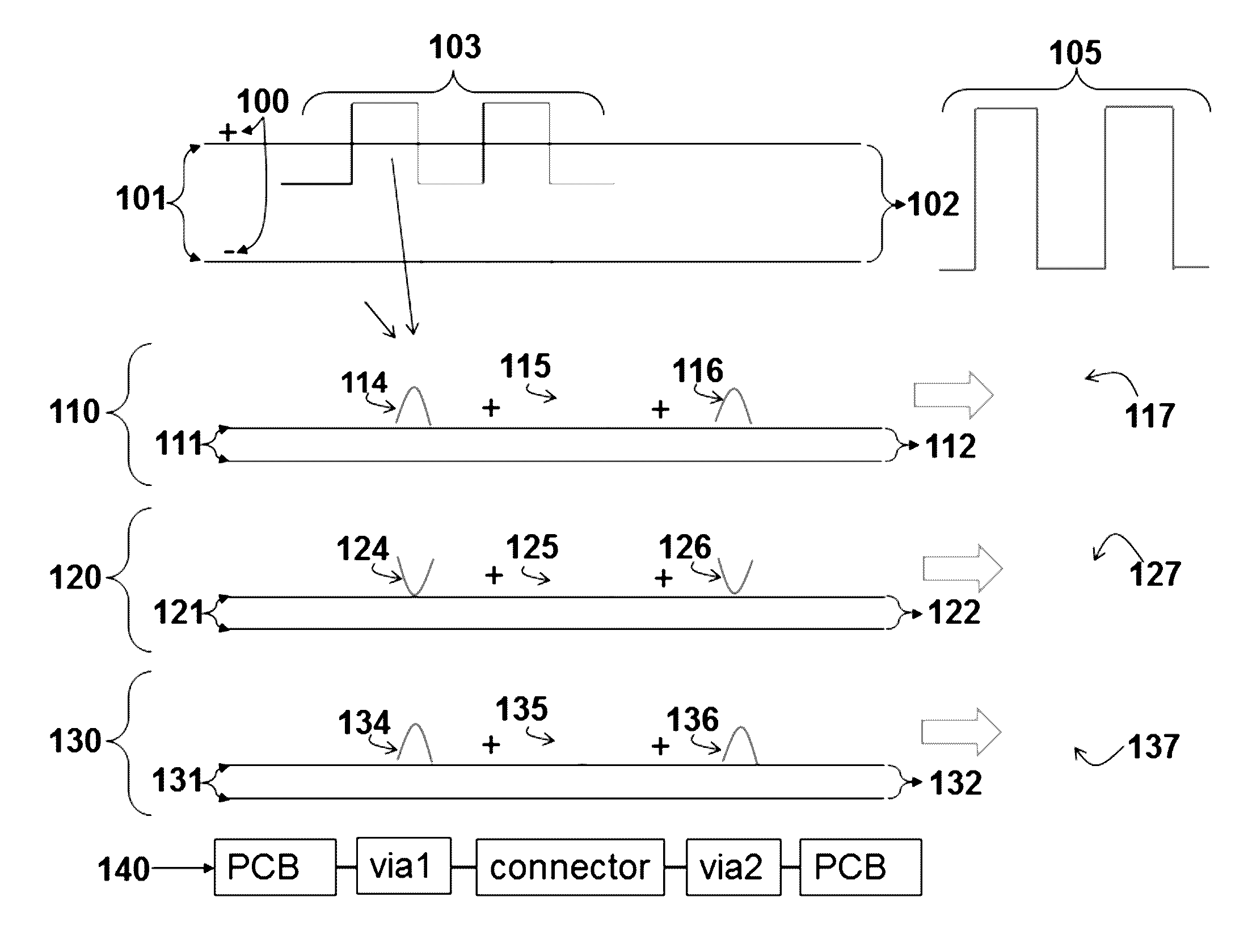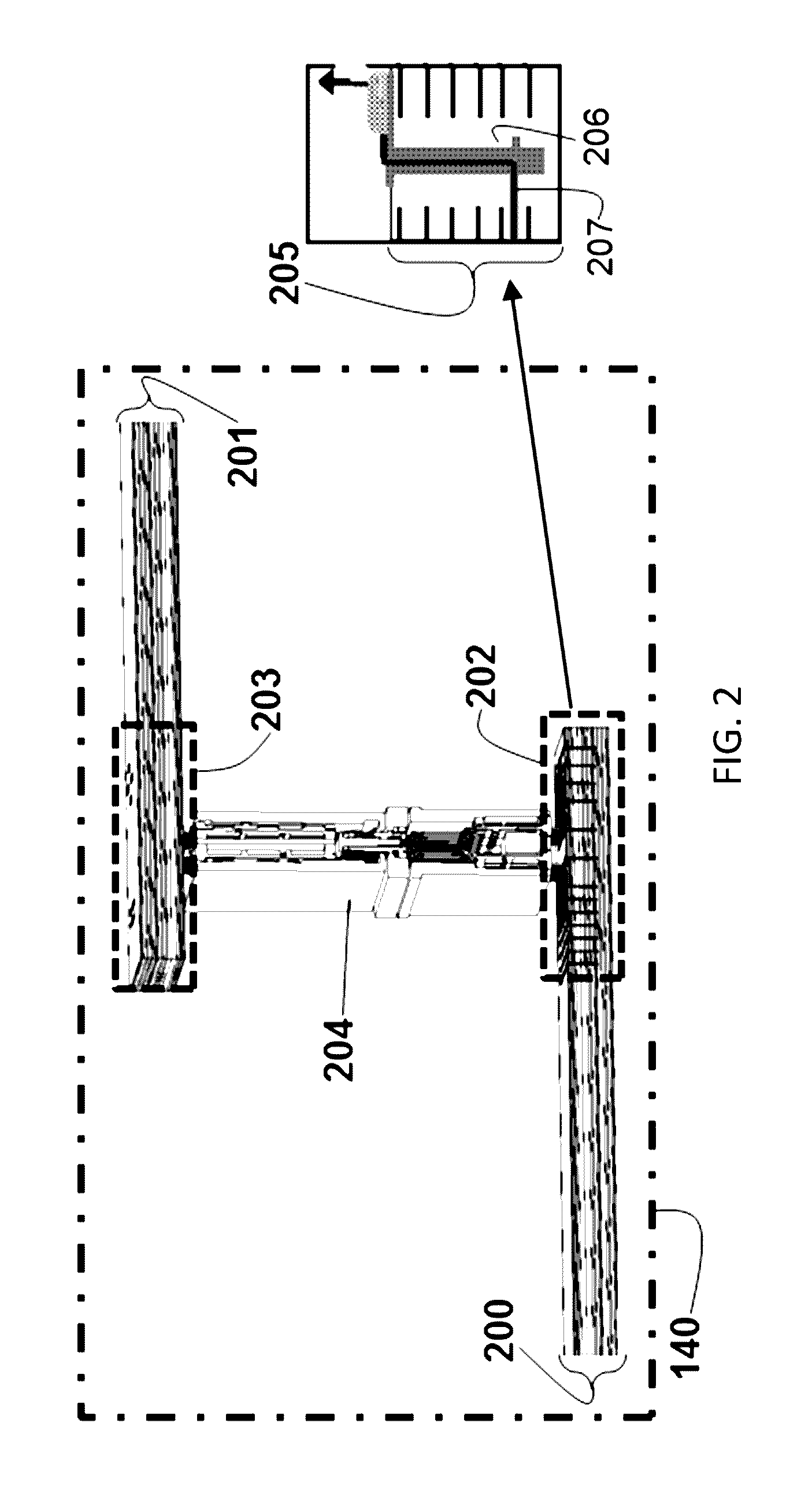Method and apparatus for reducing far-end crosstalk in electrical connectors
a far-end crosstalk and electrical connector technology, applied in the field of systems for reducing far-end crosstalk (fext), can solve the problems of significant increase in unwanted noise, or electromagnetic coupling occurring between neighbor channels, imposed design and implementation difficulties, and increase the consumption of allocated real estate, so as to facilitate pcb trace routing, large consumption of pcb real estate, and stable power distribution through the connector
- Summary
- Abstract
- Description
- Claims
- Application Information
AI Technical Summary
Benefits of technology
Problems solved by technology
Method used
Image
Examples
example implementation
[0072 configuration 1950 of FIG. 19(c) illustrates an implementation within a connector by applying both edge-coupling 1955 and broadside coupling 1965 to signal conductors. Receptacle side 1956 and plug side 1957 are mated at 1954 as shown. Plug side 1957 signal conductors interface with cables 1953 at cable termination 1952. Insert molding 1962, of connector side view 1960 of FIG. 19(d), molds over connector conductors and connector shell 1967 encapsulates the mold. Differential FEXT from neighbor aggressors to a victim pair 1951 is expected to have small magnitude due to sequence of edge coupling 1955 and broadside coupling 1965 configurations. With optimum coupling length of each configuration, magnitude of both polarities will be similar and cumulative FEXT of the connector will be reduced.
PUM
 Login to View More
Login to View More Abstract
Description
Claims
Application Information
 Login to View More
Login to View More - R&D
- Intellectual Property
- Life Sciences
- Materials
- Tech Scout
- Unparalleled Data Quality
- Higher Quality Content
- 60% Fewer Hallucinations
Browse by: Latest US Patents, China's latest patents, Technical Efficacy Thesaurus, Application Domain, Technology Topic, Popular Technical Reports.
© 2025 PatSnap. All rights reserved.Legal|Privacy policy|Modern Slavery Act Transparency Statement|Sitemap|About US| Contact US: help@patsnap.com



